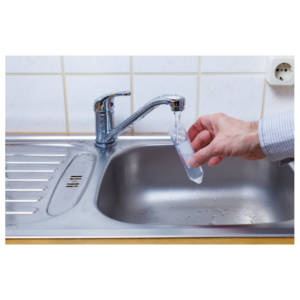 The lead contamination of Flint, Michigan’s water supply put the spotlight on the importance of clean, healthy water everywhere, including your Mid-Atlantic home. Do you know how to make sure the water coming out of your home’s tap is safe to drink?
The lead contamination of Flint, Michigan’s water supply put the spotlight on the importance of clean, healthy water everywhere, including your Mid-Atlantic home. Do you know how to make sure the water coming out of your home’s tap is safe to drink?
According to the Environmental Protection Agency, between 10 percent and 20 percent of Americans’ exposure to lead comes from contaminated water. Because lead accumulates in the body over time, even low levels of lead can eventually become toxic to the body.
Is my water at risk for lead contamination?
It doesn’t matter whether your water comes from a well on your property or from a public water system, putting your water to the test is the only way to make sure it is healthy to drink. While public water systems do their own testing as part of their monitoring procedures, water quality can vary from home to home. Testing your water is especially important if your home has lead pipes or your non-plastic plumbing was installed before 1986. And there is no way to see, taste or smell lead dissolved in water.
If you use a municipal water supplier, you can ask for a copy of their Consumer Confidence Report, with is required to be conducted on a regular basis. You can find those reports here. Safe levels of lead in the water should be below 15 parts per billion. If you have well water, it is important to test that water when the well is new and then again when there is a pregnant woman, an infant or even a child under the age of 18 living in the home.
The only way to really know the quality of the water coming out of your faucet is by testing it, either by asking your local water supplier to do the sampling or by purchasing a lead testing kit from your local home improvement store.
If you are conducting your own home test, it is important to:
- Follow the testing directions carefully
- Use “first draw water” in the testing, which is the very first water coming out of your faucet after sitting overnight
- Send the water sample to a state-certified laboratory. You can find those certified labs here.
How to Reduce Your Exposure to Lead in Drinking Water
- Some faucet and pitcher filters can remove lead from drinking water. If you use one, be sure to get one that is certified by National Sanitation Foundation International to remove lead.
- Clean your faucet’s screen where minerals can build up.
- Run your tap before drinking for 15 to 30 seconds especially if it hasn’t been used for more than six hours.
- Have children or the elderly in the home tested for lead exposure in their blood.
- Cook with cold water. Lead is likely to be highest in hot water.
- Use cold water to mix with baby formula.
- For more information about your water supplier or your risk, visit the EPA website or call the Safe Drinking Water Hotline at 1-800-426-4791.
If your testing finds lead in your home, you may need to replace fixtures and pipes that are causing the contamination. The experts at Len The Plumber can help you with pipe replacement or whole house re-piping. Len The Plumber offers PVC, copper or PEX plastic pipes for your home. Len the Plumber professionals are on-hand to solve all your home’s plumbing problems 24 hours a day, seven days a week.
The post How to Make Sure Your Drinking Water is Safe appeared first on Len The Plumber.
No comments:
Post a Comment